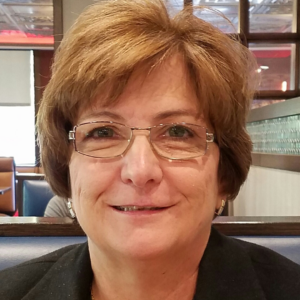Music is magic for residents with Alzheimer’s
Mary” had not spoken in more than five years. Her days were spent staring blankly down a hallway. Friendly passersby would greet her with an occasional “hello” but receive only silence in reply. Although she still made eye contact, she gave no audible or interactive response to the world around her. The diagnosis was late-stage Alzheimer’s disease, and she appeared robbed of any quality of life.
As a music therapist, I was immediately drawn to this woman. I wanted to see how Mary would respond if music was introduced into her environment. I pulled up a chair beside her and began to play guitar and sing “Side by Side”—a song popular when she was a young adult. At first, my presence appeared to go unnoticed, but halfway through the song she initiated eye contact and began to move her hand. I then gave her a maraca to grasp and helped her shake it to the beat. Before long, she was shaking it on her own—her face brightening as the song went on. The most amazing interaction came during the last line of the song when Mary sang along with me! We went on to sing song after song, her occasional laugh interrupting our lyrics. Soon we had a crowd of nurses and other staff gathered around us, amazed that after five years Mary had finally found her voice again.
Music as Therapy
This is only one of many of stories I could tell about the power of music to transcend disease and disability and break through to reach a person considered unreachable. Music, when applied by a trained music therapist, can improve, restore, and maintain the physical, mental, emotional, social, and spiritual health of an individual. At Sherrill House, Inc., a not-for-profit skilled nursing facility in Boston, we have developed an extensive music therapy program to meet the various needs of our residents.
Our music therapy staff provides individualized care to residents after assessing their specific needs. These needs are generally nonmusical in nature; for example, physical weakness, symptoms of depression, or increased anxiety caused by Alzheimer’s. Once these areas of need are identified, we can address them in either a group or individual session using music as the medium.
Sherrill House began its commitment to music therapy in 1997 and has since become one of the few long-term care facilities in the country to employ full-time music therapists. According to Patrick J. Stapleton, CEO of Sherrill House, “We at Sherrill House are committed to providing the most effective therapies and services to our Alzheimer’s residents. We are proud to have one of the most comprehensive music therapy programs in the industry and consider it a valuable asset.” The program has grown to embrace two full-time therapists and one part-time therapist. Sherrill House is also affiliated with the Music Therapy Department at Berklee College of Music and hosts full-time Music Therapy interns and numerous practicum students each semester, further enriching the program.
Why Music?
There are many reasons why music is considered therapeutic, in-cluding the following four:
Music is universal. Music is important to people regardless of age, religion, ethnicity, or culture. While there are variances in preferences, music as a whole is enjoyed and valued by all.
Music is comforting. Music can be used as an escape or as a way to relax because it is familiar, safe, and nonthreatening. This makes music particularly beneficial for those with Alzheimer’s.
Music is structured. Many of our life processes are rooted in rhythm. For example, our breathing, heart rate, and pulse are all repetitive and rhythmic. Since we are, in essence, rhythmic beings, we have come to rely on its order, predictability, and structure. Therefore, we can use the rhythm to relax or excite—either of which can bring about desirable changes in behavior that contribute to life quality.
Music is success oriented. Music can be simplified so that everyone participating can feel successful. If a person is unable to sing, he or she may be successful playing a rhythm instrument such as a maraca. Also, making live music with a person gives instant gratification. Even if it is just a shake of a maraca, it is still a successful, enjoyable experience.
Music Therapy for Residents With Alzheimer’s
One of the biggest challenges we as caregivers face when dealing with Alzheimer’s disease is finding appropriate stimuli and activities to promote alertness and involvement without increasing agitation. Furthermore, as the ability to communicate verbally declines, it becomes all the more difficult for the person with Alzheimer’s to participate in purposeful activity. However, I have observed that even though a person has long lost the ability to interact verbally, he or she remains able to respond to and participate in group or individual music activities well into the late stages of the disease.
While developing the Alzheimer’s portion of our music therapy program at Sherrill House, we set as a priority the maintenance and/or improvement of the quality of life of our Alzheimer’s residents. We began by looking at the time of day when our residents exhibited the highest need for redirecting activity because of heightened anxiety levels. We found that agitation was most prevalent during the afternoon “sundowning” hours—between 3:00 p.m. and 5:00 p.m. In the person with Alzheimer’s, this is typically a stressful time caused by a variety of factors, including nursing change of shift, decreased sunlight, and the increased desire to “go home.” We subsequently decided to incorporate a music therapy session during these hours to focus the residents on something with a purpose—the music—while encouraging them to interact with other group members to ward off any feelings of isolation.
The Music Therapy Session
A number of factors are considered when implementing a music therapy session. First, group size should be kept to six to eight participants so that individual attention can be devoted to each person, keeping him or her actively engaged. Second, it is important to use a predictable, consistent format for the sake of familiarity—this may include using the same room at the same time for each session. We strive to take our residents to a quiet room off the unit where distractions are minimal, which gives the residents the sense that they are, indeed, going somewhere and encourages uninterrupted focus.
We begin each session with an opening “Hello Song,” welcoming each group member individually to promote feelings of acceptance and belonging. The body of the session may include songs pertaining to a certain theme (summertime, school days, etc.), as well as rhythm instrument playing and active movement to the music.
Resident choice is incorporated as much as possible in the session so that each participant can exercise some degree of independence. The choice may be as simple as choosing between a drum and a tambourine but it nonetheless empowers the individual. Residents are encouraged to actively sing, play, and even verbally contribute to simple discussions, if able.
Each session concludes with a “Good-Bye Song” and by thanking each participant individually for his or her involvement. By the end of the session, the group is markedly more relaxed and focused than when the group began.
Benefits of Music Therapy
When we design individualized music experiences to fit our residents’ functional abilities and needs, responses may be immediate and readily apparent. A resident does not need a musical background to participate.
The benefits of music therapy with Alzheimer’s include memory recall, which contributes to reminiscence and life satisfaction; positive changes in mood and anxiety and stress reduction; pain management; and opportunities for social interactions.
One of the most rewarding outcomes of music therapy is the emotional intimacy achieved when families share creative music experiences. Music provides family members with the opportunity to interact with their loved ones in a meaningful way that is especially significant if verbal communication has ceased.
According to one family member, “It’s terrifying how because of Alzheimer’s disease my mother has lost all memory of some of the most important things in her life, and yet although she doesn’t remember her husband, she is able to recall and sing the specific words of songs. She sometimes cannot speak a coherent sentence, and yet she can sing a line perfectly. Singing together creates a sense of belonging, calms her, and uplifts her spirits. The experiences she is able to enjoy have been severely limited by the disease, and it is sometimes extremely hard for her even to take part in the simplest conversation, but music gives us something we can still do together, with pleasure.”
Having a music therapy program at Sherrill House has unquestionably improved the quality of life of our Alzheimer’s residents, like Mary. Music has proven to be a powerful way of building bridges to the mind and soul, allowing them to resurface again. As one of our residents with Alzheimer’s recently said, “I just don’t know what I’d do without music!”
Dianne Tow, MT-BC, is a board-certified Music Therapist and Manager of Music Therapy at Sherrill House in Boston.
For more information, phone (617) 731-2400 or visit https://www.sherrillhouse.org. To send your comments to the author and editors, e-mail tow1106@nursinghomesmagazine.com.
Sidebar
A collaboration of the American Association of Homes and Services for the Aging and Nursing Homes/Long Term Care ManagementNot-for-Profit Report, appearing in every issue of Nursing Homes magazine, addresses issues of particular interest to long-term care’s not-for-profit sector. It provides nonprofit aging service providers with an additional information resource. Topics have been identified in collaboration with the American Association of Homes and Services for the Aging. Nursing Homes welcomes comments and suggestions for future coverage.
I Advance Senior Care is the industry-leading source for practical, in-depth, business-building, and resident care information for owners, executives, administrators, and directors of nursing at assisted living communities, skilled nursing facilities, post-acute facilities, and continuing care retirement communities. The I Advance Senior Care editorial team and industry experts provide market analysis, strategic direction, policy commentary, clinical best-practices, business management, and technology breakthroughs.
I Advance Senior Care is part of the Institute for the Advancement of Senior Care and published by Plain-English Health Care.
Related Articles
Topics: Activities , Alzheimer's/Dementia , Articles











